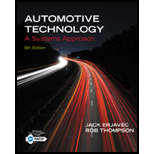
Automotive Technology: A Systems Approach (MindTap Course List)
6th Edition
ISBN: 9781133612315
Author: Jack Erjavec, Rob Thompson
Publisher: Cengage Learning
expand_more
expand_more
format_list_bulleted
Textbook Question
Chapter 14, Problem 4RQ
Which of the following is a function of the engines lubrication system?
- Holds an adequate supply of oil
Expert Solution & Answer
Trending nowThis is a popular solution!

Students have asked these similar questions
Which of the following is a function of the engine’slubrication system?a. Holds an adequate supply of oilb. Removes contaminants from the oilc. Delivers oil to all necessary areas of the engined. All of the above
Technician A says that liquid cooling an engine helps to maintain a consistent operating temperature. Technician B says that oil is circulated through the cooling system to remove heat from the engine's parts. Who is correct?
a. Technician A
b. Technician B
c. Both A and B
d. Neither A nor B
Technician A uses sandpaper to remove carbon deposits from turbocharger wastegate parts. Technician B scrapes off heavy deposits before attempting to clean the unit. Who is correct?
Chapter 14 Solutions
Automotive Technology: A Systems Approach (MindTap Course List)
Ch. 14 - What is the most efficient way to increase a...Ch. 14 - True or False? Oil pressure is determined by...Ch. 14 - Describe the simple test used to determine whether...Ch. 14 - Which of the following is a function of the...Ch. 14 - What is ECD and what can result from it?Ch. 14 - True or False? To eliminate the drain of engine...Ch. 14 - For every pound of pressure put on engine coolant,...Ch. 14 - Which is not a typical method of driving the water...Ch. 14 - Which of the following is not an effective way to...Ch. 14 - Explain why a pressure relief valve is needed in...
Ch. 14 - List five problems that can be caused by engine...Ch. 14 - Cooling system hoses should be replaced when they...Ch. 14 - True or False? The presence of air in the cooling...Ch. 14 - Which of the following is not a true statement...Ch. 14 - Describe the procedure for using air bleed valves...Ch. 14 - Technician A uses a feeler gauge and straightedge...Ch. 14 - Technician A says that excessive engine oil...Ch. 14 - While checking for conditions that might cause...Ch. 14 - When installing an oil pump in an engine...Ch. 14 - Technician A says that if the PCV valve or...Ch. 14 - While bleeding air from a cooling system:...Ch. 14 - While diagnosing an engine that overheats after...Ch. 14 - While performing a cooling system service on a...Ch. 14 - While discussing the causes of extreme engine...Ch. 14 - While diagnosing the cause of air bubbles in the...
Knowledge Booster
Learn more about
Need a deep-dive on the concept behind this application? Look no further. Learn more about this topic, mechanical-engineering and related others by exploring similar questions and additional content below.Similar questions
- True or False? The first step in removing an engine is usually the removal of the intake and exhaust manifolds.arrow_forwardWhich of the following is not accomplished by the fuel and air system of a gasoline engine? Stores the fuel for later use Collects and cleans the outside air Delivers fuel to a device that will control the amount of fuel going to the engine Keeps the fuel and air ratio constant regardless of the conditions under which the engine is operatingarrow_forwardWhich of the following are not typically found in the block of a modern engine? a. Pistons b. Crankshaft c. Valves d. Oil pumparrow_forward
- True or False? All engine coolants contain some phosphates, which make them unfriendly to the environment.arrow_forwardWhich of the following is not a common way to identify the location of cracks in the engine block or cylinder head? Pressure checks Vacuum test Magnetic particle inspection Penetrativearrow_forwardWhich of the following statements about engines is not true? The engine provides the rotating power to drive the wheels through the transmission and driving axle. Only gasoline engines are classified as internal combustion. The combustion chamber is the space between the top of the piston and the cylinder head. For the combustion in the cylinder to take place completely and efficiently, air and fuel must be combined in the right proportions.arrow_forward
- Which of the following is not an effective way to determine if an engine has an internal coolant leak? Performing a pressure test on the system Visually inspecting the exhaust, coolant, and engine oil Using a dye penetrant and black light Using a combustion leak testerarrow_forwardTechnician A says that used engine coolant should be collected and recycled. Technician B says that all oil- based waste materials can be collected in the same container if an approved waste disposal company is hired to rid the shop of the oil. Who is correct? Technician A Technician B Both A and B Neither A nor Barrow_forwardHow should the oil pump be primed when installing it into the engine?arrow_forward
- The presents of air in the cooling systems indicates the head gasket is faulty? True or falsearrow_forwardwhat is tappet clearance and how it can be maintained to run the engine smoothlyarrow_forwardTechnician A says that an air-conditioning system removes heat from inside the engine. Technician B says that the heating system removes heat from the inside of the vehicle. Who is correct? a. Technician A b. Technician B c. Both A and B d. Neither A nor Barrow_forward
arrow_back_ios
SEE MORE QUESTIONS
arrow_forward_ios
Recommended textbooks for you
 Automotive Technology: A Systems Approach (MindTa...Mechanical EngineeringISBN:9781133612315Author:Jack Erjavec, Rob ThompsonPublisher:Cengage Learning
Automotive Technology: A Systems Approach (MindTa...Mechanical EngineeringISBN:9781133612315Author:Jack Erjavec, Rob ThompsonPublisher:Cengage Learning Automotive TechnologyMechanical EngineeringISBN:9781337794213Author:ERJAVEC, Jack.Publisher:Cengage,
Automotive TechnologyMechanical EngineeringISBN:9781337794213Author:ERJAVEC, Jack.Publisher:Cengage, Refrigeration and Air Conditioning Technology (Mi...Mechanical EngineeringISBN:9781305578296Author:John Tomczyk, Eugene Silberstein, Bill Whitman, Bill JohnsonPublisher:Cengage Learning
Refrigeration and Air Conditioning Technology (Mi...Mechanical EngineeringISBN:9781305578296Author:John Tomczyk, Eugene Silberstein, Bill Whitman, Bill JohnsonPublisher:Cengage Learning

Automotive Technology: A Systems Approach (MindTa...
Mechanical Engineering
ISBN:9781133612315
Author:Jack Erjavec, Rob Thompson
Publisher:Cengage Learning

Automotive Technology
Mechanical Engineering
ISBN:9781337794213
Author:ERJAVEC, Jack.
Publisher:Cengage,

Refrigeration and Air Conditioning Technology (Mi...
Mechanical Engineering
ISBN:9781305578296
Author:John Tomczyk, Eugene Silberstein, Bill Whitman, Bill Johnson
Publisher:Cengage Learning
The Refrigeration Cycle Explained - The Four Major Components; Author: HVAC Know It All;https://www.youtube.com/watch?v=zfciSvOZDUY;License: Standard YouTube License, CC-BY